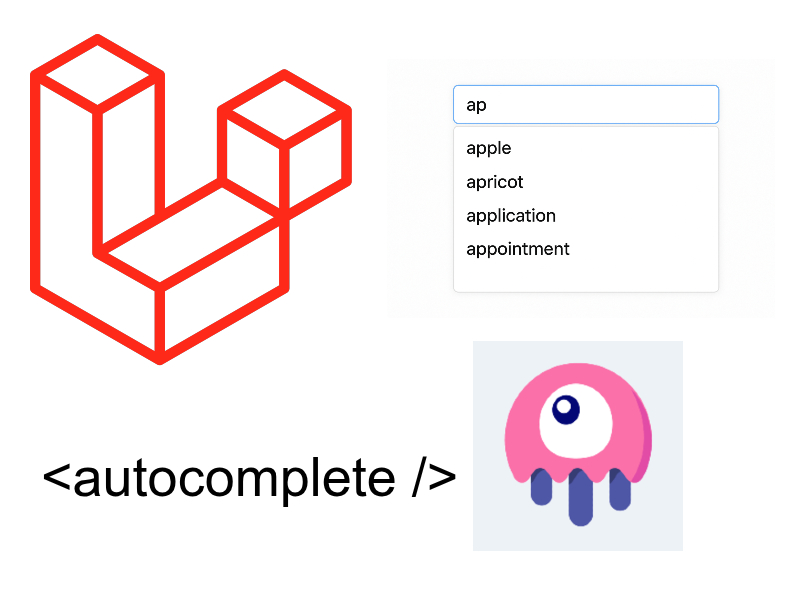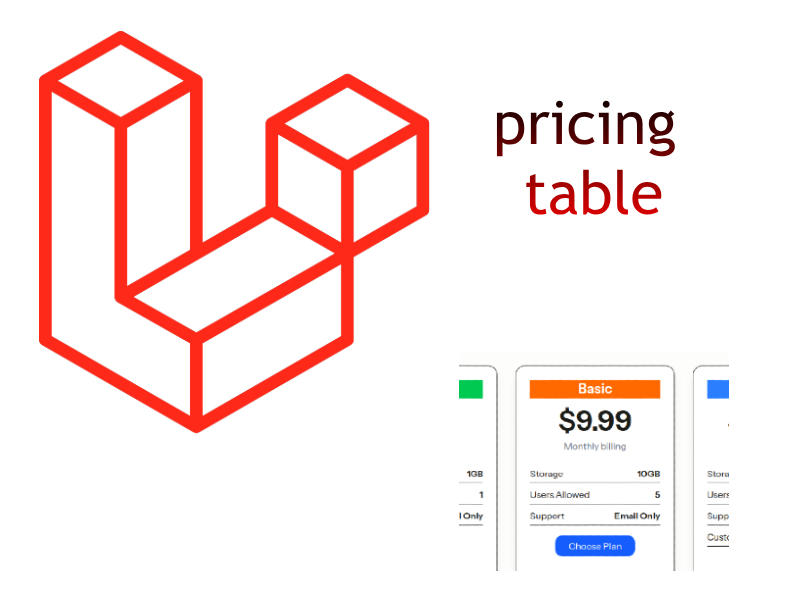
In this tutorial we will introduce the concept of website scraping, then we will clarify that concept with a real world example using php and laravel.
Series Topics:
- Building A Simple Scraping Website With PHP Laravel Part1: Beginning
- Building A Simple Scraping Website With PHP Laravel Part2: Dashboard and Crud
- Building A Simple Scraping Website With PHP Laravel Part3: Article Display
Requirements:
- PHP and Laravel framework
- Boostrap
- Jquery
Overview:
Content scraping means reading pieces of content from html or xml pages to be displayed in some websites or to be saved into database, for example we might want to read a listing of articles in a news website or to read the products of ecommerce websites to make something like pricing comparison, etc. So the process is to pull pieces of information like item titles, descriptions, images and more.
Methods of Scraping:
- Regex (Regular expressions).
- CSS selectors.
- XPath (a technique similar to querying with CSS selector).
Scraping Process:
As shown in the figure below consider we have a list of articles, each article have image, title, excerpt and we need to retrieve each of those pieces.
so using a technique like css selectors we can do something like this identified as pseudo code:
// this is just a pseudo code to clarify the process not actual code
foreach (<article> as node) {
$title = node.children('h2').text()
$excerpt = node.children('p').html()
$img = node.children('img').attr('src')
.....
}

PHP Goutte Package:
For the purpose of this tutorial we will be using a php package called Goutte used in web scraping and this is the github repo for the package. This package internally based on symfony dom crawler.
use Goutte\Client;
$client = new Client();
// create a crawler object from this link
$crawler = $client->request('GET', 'https://www.nytimes.com/section/politics');
// filter all li elements that have class “css-ye6x8s” and loop over them
$crawler->filter('li.css-ye6x8s')->each(function ($node) {
print $node->filter(‘h2.css-1dq8tca’).text(); // get all h2 elements text inside each li
});
The filter() function is one of the functions in symfony dom crawler, and it functions to filter elements by css selectors, there is also another function filterXPath() which filter elements with xpath expressions. So filter(selector) returns the selector if found as a crawler object or null of not found so that you can use that object to retrieve other nested elements
consider this sample html:
<ul>
<li><p>First</p></li>
<li><p class=”second”>Second</p></li>
<li><p>Third</p></li>
<ul>
To get the first element
$crawler->filter(‘ul li’)->first();
To get element by specific index
$crawler->filter(‘ul li’)->eq(1);
To get children’s of an element
$crawler->filter(‘ul’)->children();
Refer to symfony dom crawler documentation to learn more about the other available functions.
Preparing The Project:
We will build a news website where administrator can be able to add categories, add links for news websites and fetch articles with scraping.
So create a new laravel project:
composer create-project laravel/laravel web-scraper "5.5.*" --prefer-dist
Install PHP Goutte:
composer require fabpot/goutte
Next modify your database settings in .env:
DB_CONNECTION=mysql DB_HOST=127.0.0.1 DB_PORT=3306 DB_DATABASE=<db name> DB_USERNAME=<db user> DB_PASSWORD=<db password>
Database tables
- Categories
- Articles
- Websites: Hold the websites we will need to pull data from.
- Links: Hold the single links linked with the websites to pull data from.
- Item Schema: This table define the schema for a single item in the list of items, it will contain the css expression to fetch individual pieces of data like title, excerpt, image etc.
Let’s create some migrations for our database
php artisan make:migration create_category_table php artisan make:migration create_website_table php artisan make:migration create_article_table php artisan make:migration create_item_schema_table php artisan make:migration create_links_table
Next modify the migration files as follows:
database/migrations/XXXX_XX_XX_create_category_table.php
<?php
use Illuminate\Support\Facades\Schema;
use Illuminate\Database\Schema\Blueprint;
use Illuminate\Database\Migrations\Migration;
class CreateCategoryTable extends Migration
{
/**
* Run the migrations.
*
* @return void
*/
public function up()
{
Schema::create('category', function (Blueprint $table) {
$table->increments('id');
$table->string("title");
$table->timestamps();
});
}
/**
* Reverse the migrations.
*
* @return void
*/
public function down()
{
Schema::dropIfExists('category');
}
}
database/migrations/XXXX_XX_XX_create_website_table.php
<?php
use Illuminate\Support\Facades\Schema;
use Illuminate\Database\Schema\Blueprint;
use Illuminate\Database\Migrations\Migration;
class CreateWebsiteTable extends Migration
{
/**
* Run the migrations.
*
* @return void
*/
public function up()
{
Schema::create('website', function (Blueprint $table) {
$table->increments('id');
$table->string('title');
$table->string('logo');
$table->string('url');
$table->timestamps();
});
}
/**
* Reverse the migrations.
*
* @return void
*/
public function down()
{
Schema::dropIfExists('website');
}
}
database/migrations/XXXX_XX_XX_create_article_table.php
<?php
use Illuminate\Support\Facades\Schema;
use Illuminate\Database\Schema\Blueprint;
use Illuminate\Database\Migrations\Migration;
class CreateArticleTable extends Migration
{
/**
* Run the migrations.
*
* @return void
*/
public function up()
{
Schema::create('article', function (Blueprint $table) {
$table->increments('id');
$table->string('title', 355);
$table->text('excerpt')->nullable();
$table->longText('content')->nullable();
$table->string('image')->nullable();
$table->string('source_link', 355)->nullable();
$table->unsignedInteger('category_id')->nullable();
$table->unsignedInteger('website_id')->nullable();
$table->foreign('category_id')
->references('id')
->on('category')
->onUpdate('cascade')
->onDelete('set null');
$table->foreign('website_id')
->references('id')
->on('website')
->onUpdate('cascade')
->onDelete('set null');
$table->timestamps();
});
}
/**
* Reverse the migrations.
*
* @return void
*/
public function down()
{
Schema::dropIfExists('article');
}
}
database/migrations/XXXX_XX_XX_create_links_table.php
<?php
use Illuminate\Support\Facades\Schema;
use Illuminate\Database\Schema\Blueprint;
use Illuminate\Database\Migrations\Migration;
class CreateLinksTable extends Migration
{
/**
* Run the migrations.
*
* @return void
*/
public function up()
{
Schema::create('links', function (Blueprint $table) {
$table->increments('id');
$table->string('url');
$table->string('main_filter_selector'); // this is the main filter selector used in the main filter() function
$table->unsignedInteger('website_id')->nullable();
$table->unsignedInteger('category_id')->nullable();
$table->unsignedInteger('item_schema_id')->nullable();
$table->foreign('website_id')
->references('id')
->on('website')
->onUpdate('cascade')
->onDelete('set null');
$table->foreign('category_id')
->references('id')
->on('category')
->onUpdate('cascade')
->onDelete('set null');
$table->foreign('item_schema_id')
->references('id')
->on('item_schema')
->onUpdate('cascade')
->onDelete('set null');
$table->timestamps();
});
}
/**
* Reverse the migrations.
*
* @return void
*/
public function down()
{
Schema::dropIfExists('links');
}
}
database/migrations/XXXX_XX_XX_create_item_schema_table.php
<?php
use Illuminate\Support\Facades\Schema;
use Illuminate\Database\Schema\Blueprint;
use Illuminate\Database\Migrations\Migration;
class CreateItemSchemaTable extends Migration
{
/**
* Run the migrations.
*
* @return void
*/
public function up()
{
Schema::create('item_schema', function (Blueprint $table) {
$table->increments('id');
$table->string('title');
$table->boolean('is_full_url')->default(1); // whether this is a full link to article or partial link
$table->text('css_expression'); // expression defines the selectors structure for this item i.e (a > p) find all p tags inside a
$table->string('full_content_selector');
$table->timestamps();
});
}
/**
* Reverse the migrations.
*
* @return void
*/
public function down()
{
Schema::dropIfExists('item_schema');
}
}
The category table will hold the categories, the article table will hold the articles linked by category id.
The website table represent the websites that we will scrape data from.
The links table represent the links for specific website and we added category_id to be assigned to, hence we say that link articles will be linked to the selected category id.The main_filter_selector defines the main css selector that will be passed to the filter() function so we say $crawler->filter(main_filter_selector)
The item_schema table represent the schema structure for single items in an article list page, for example the article contain title, url, excerpt, image.
The is_full_url defines whether the article uses a full url to the details page or partial url.
The css_expression attribute hold a special expression for all css selectors that represent those elements, as we will discuss this in the next sections.
The full_content_selector defines the css selector of the item content in the detail page.
Generating Models
Let’s create the required models for the database tables:
php artisan make:model Website php artisan make:model Category php artisan make:model Article php artisan make:model Link php artisan make:model ItemSchema
Open app/Website.php and modify it as follows:
<?php
namespace App;
use Illuminate\Database\Eloquent\Model;
class Website extends Model
{
protected $table = "website";
}
Modify app/Category.php as follows:
<?php
namespace App;
use Illuminate\Database\Eloquent\Model;
class Category extends Model
{
protected $table = "category";
}
app/Article.php
<?php
namespace App;
use Illuminate\Database\Eloquent\Model;
class Article extends Model
{
protected $table = "article";
public function category()
{
return $this->belongsTo('App\Category', 'category_id');
}
public function website()
{
return $this->belongsTo('App\Website', 'website_id');
}
}
app/Link.php
<?php
namespace App;
use Illuminate\Database\Eloquent\Model;
class Link extends Model
{
protected $table = "links";
public function category()
{
return $this->belongsTo('App\Category', 'category_id');
}
public function website()
{
return $this->belongsTo('App\Website', 'website_id');
}
public function itemSchema()
{
return $this->belongsTo('App\ItemSchema', 'item_schema_id');
}
}
app/ItemSchema.php
<?php
namespace App;
use Illuminate\Database\Eloquent\Model;
class ItemSchema extends Model
{
protected $table = "item_schema";
}
As shown in the above code we added some relations to the models for example in the Article model there are two relations the Category and the Website it belongs to. In the Link model there are relations between the Category, Website and Item Schema.
Preparing main layout
Now we need to create the main layout template in resources/views/layout.blade.php and add the below contents:
<!doctype html>
<html lang="{{ app()->getLocale() }}">
<head>
<meta charset="utf-8">
<meta http-equiv="X-UA-Compatible" content="IE=edge">
<meta name="viewport" content="width=device-width, initial-scale=1">
<title>Web Scraper</title>
<!-- Fonts -->
<link href="https://fonts.googleapis.com/css?family=Raleway:100,600" rel="stylesheet" type="text/css">
<link href="https://stackpath.bootstrapcdn.com/bootstrap/3.3.1/css/bootstrap.min.css" rel="stylesheet" type="text/css" />
<style>
.glyphicon.fast-right-spinner {
-webkit-animation: glyphicon-spin-r 1s infinite linear;
animation: glyphicon-spin-r 1s infinite linear;
}
@-webkit-keyframes glyphicon-spin-r {
0% {
-webkit-transform: rotate(0deg);
transform: rotate(0deg);
}
100% {
-webkit-transform: rotate(359deg);
transform: rotate(359deg);
}
}
@keyframes glyphicon-spin-r {
0% {
-webkit-transform: rotate(0deg);
transform: rotate(0deg);
}
100% {
-webkit-transform: rotate(359deg);
transform: rotate(359deg);
}
}
</style>
<script src="https://code.jquery.com/jquery-1.12.4.min.js"></script>
<script src="https://stackpath.bootstrapcdn.com/bootstrap/3.3.1/js/bootstrap.min.js"></script>
</head>
<body>
<div class="container">
<div class="row">
<nav class="navbar navbar-default">
<div class="container-fluid">
<div class="navbar-header">
<button type="button" class="navbar-toggle collapsed" data-toggle="collapse" data-target="#bs-example-navbar-collapse-1" aria-expanded="false">
<span class="sr-only">Toggle navigation</span>
<span class="icon-bar"></span>
<span class="icon-bar"></span>
<span class="icon-bar"></span>
</button>
<a class="navbar-brand" href="{{url('/')}}">Web Scraper</a>
</div>
<div class="collapse navbar-collapse">
<ul class="nav navbar-nav navbar-right">
<li class="dropdown">
<a href="#" class="dropdown-toggle" data-toggle="dropdown" role="button" aria-haspopup="true" aria-expanded="false">Dashboard <span class="caret"></span></a>
<ul class="dropdown-menu">
<li><a href="#">Websites</a></li>
<li><a href="#">Categories</a></li>
<li><a href="#">Links</a></li>
<li><a href="#">Item Schema</a></li>
<li role="separator" class="divider"></li>
<li><a href="#">Articles</a></li>
</ul>
</li>
</ul>
</div>
</div>
</nav>
@yield('content')
</div>
</div>
</div>
@yield('script')
</body>
</html>
This is just a simple layout with a header, we added some links that represent the dashboard items like categories, websites, articles, item schema and links.
In the next part of the tutorial we will implement the Dashboard and Crud operations.
Continue to part 2 >>> Implementing Scraper Dashboard



Your article looks. I have one more similar you can review it.
https://www.postnidea.com/php-data-scraping-techniques/
Your article looks interesting and knowledgeable. I have also a same type. Please look at it.
https://www.postnidea.com/php-data-scraping-techniques/
thanks
Amazing article. But I’m having issues installing Goutte on my laravel 6 project.
why? i did this tutorial using laravel 5 but it’s supposed to work fine on laravel 6
What is migration in laravel?
migration is where you create and alter database tables instead of manually creating databases. It’s like version control for databases
Hello, I really appreciate your distribution, but I have an error (500 Internal Server Error) and Mozilla tells me that it is due to the jquery document. Please, could you guide me to solve this problem?
Jquery don’t cause 500 server error, by the way i have added a working version in bottom of the article
Thanks, I’ve also used goutte in my projects
https://usingphp.com/post/web-scraping-in-laravel-using-goutte
thanks
I am looking for a web scaper that can be able to navigate the browser and scrap content that is being rendered using javascript.
I think this is not possible without using third party tool like Phantomjs or using Nodejs to server render the javascript
This is really helpfull. Can you provide the code of the scraping please. It will save my life in this period
You can find downloadable code at the final part